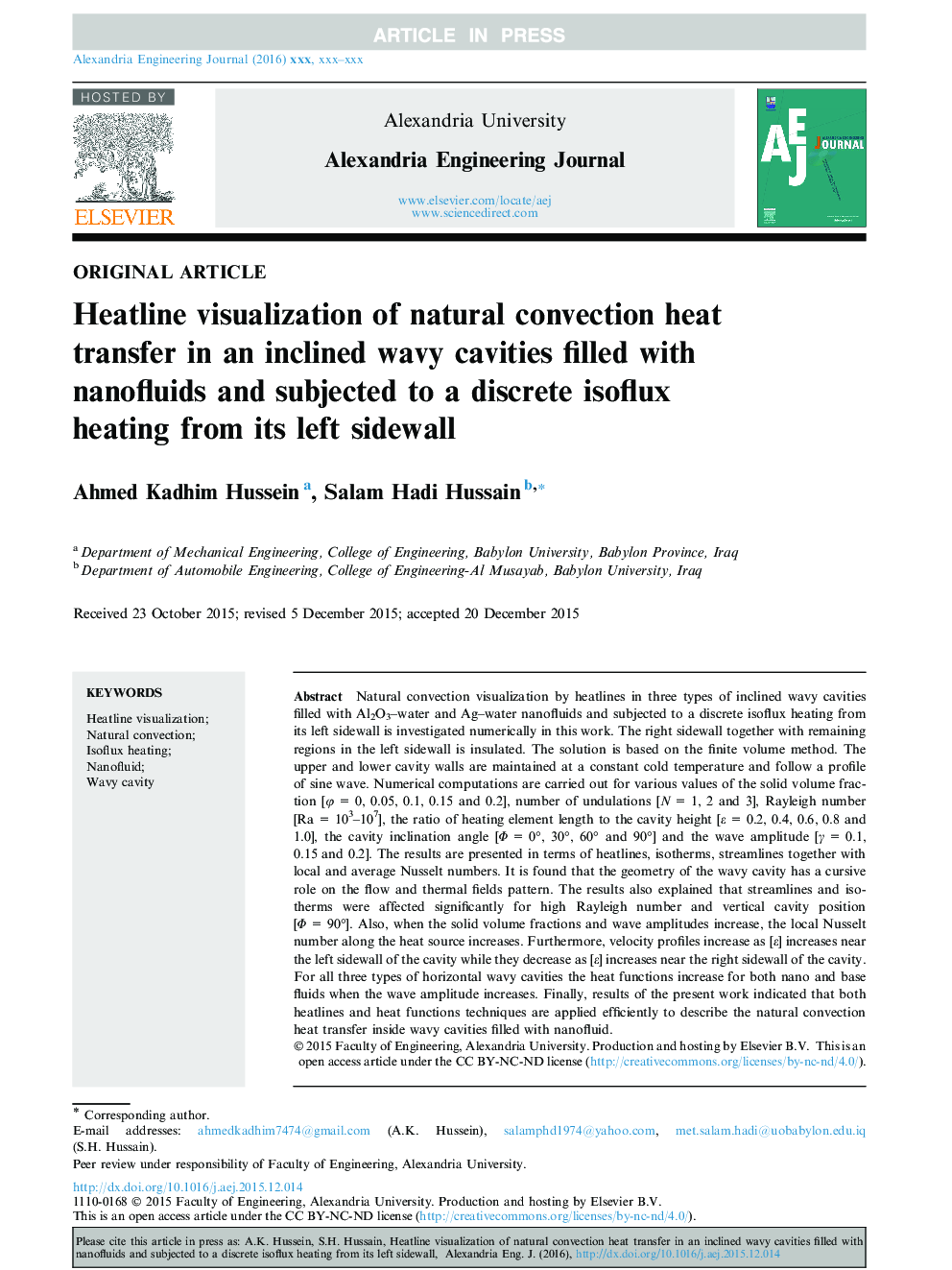| کد مقاله | کد نشریه | سال انتشار | مقاله انگلیسی | نسخه تمام متن |
|---|---|---|---|---|
| 816070 | 906432 | 2016 | 18 صفحه PDF | دانلود رایگان |
عنوان انگلیسی مقاله ISI
Heatline visualization of natural convection heat transfer in an inclined wavy cavities filled with nanofluids and subjected to a discrete isoflux heating from its left sidewall
ترجمه فارسی عنوان
تجسم حرارتی انتقال حرارتی طبیعی در یک حفره ی رگه ای پر از نانوسیم ها و تحت تابش یونیزه ای جدا شده از یون های چپ آن
دانلود مقاله + سفارش ترجمه
دانلود مقاله ISI انگلیسی
رایگان برای ایرانیان
کلمات کلیدی
موضوعات مرتبط
مهندسی و علوم پایه
سایر رشته های مهندسی
مهندسی (عمومی)
چکیده انگلیسی
Natural convection visualization by heatlines in three types of inclined wavy cavities filled with Al2O3-water and Ag-water nanofluids and subjected to a discrete isoflux heating from its left sidewall is investigated numerically in this work. The right sidewall together with remaining regions in the left sidewall is insulated. The solution is based on the finite volume method. The upper and lower cavity walls are maintained at a constant cold temperature and follow a profile of sine wave. Numerical computations are carried out for various values of the solid volume fraction [Ï = 0, 0.05, 0.1, 0.15 and 0.2], number of undulations [N = 1, 2 and 3], Rayleigh number [Ra = 103-107], the ratio of heating element length to the cavity height [ε = 0.2, 0.4, 0.6, 0.8 and 1.0], the cavity inclination angle [Φ = 0°, 30°, 60° and 90°] and the wave amplitude [γ = 0.1, 0.15 and 0.2]. The results are presented in terms of heatlines, isotherms, streamlines together with local and average Nusselt numbers. It is found that the geometry of the wavy cavity has a cursive role on the flow and thermal fields pattern. The results also explained that streamlines and isotherms were affected significantly for high Rayleigh number and vertical cavity position [Φ = 90°]. Also, when the solid volume fractions and wave amplitudes increase, the local Nusselt number along the heat source increases. Furthermore, velocity profiles increase as [ε] increases near the left sidewall of the cavity while they decrease as [ε] increases near the right sidewall of the cavity. For all three types of horizontal wavy cavities the heat functions increase for both nano and base fluids when the wave amplitude increases. Finally, results of the present work indicated that both heatlines and heat functions techniques are applied efficiently to describe the natural convection heat transfer inside wavy cavities filled with nanofluid.
ناشر
Database: Elsevier - ScienceDirect (ساینس دایرکت)
Journal: Alexandria Engineering Journal - Volume 55, Issue 1, March 2016, Pages 169-186
Journal: Alexandria Engineering Journal - Volume 55, Issue 1, March 2016, Pages 169-186
نویسندگان
Ahmed Kadhim Hussein, Salam Hadi Hussain,
